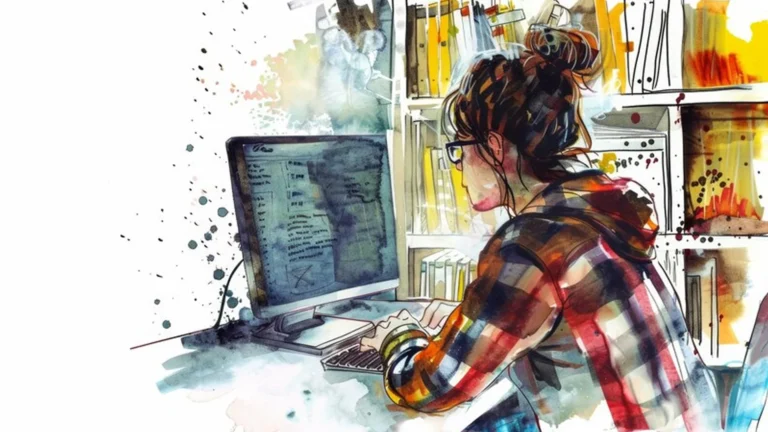Graphic design is an ever-evolving field, Absographics.com Blog and as we approach 2025, new trends, technologies, and strategies are reshaping the way designers approach their craft. Whether you’re a seasoned designer or just starting in the field, staying ahead of the curve is crucial to creating designs that not only stand out but also effectively engage and communicate with your target audience. In this article, we’ll explore the top graphic design strategies for 2025 that are expected to dominate the industry.
TRENDING
Explore Cliffe Village: A Peaceful Retreat With Rich History
Embrace AI-Driven Design Tools
Artificial intelligence (AI) has been making waves across various industries, and graphic design is no exception. By 2025, AI will play an even larger role in streamlining the design process, from automating repetitive tasks to enhancing creativity with smart tools.
Why AI in Design?
AI tools can analyze data to help designers create visuals that are more targeted and effective. For example, AI-powered design software can assist in generating color palettes, layouts, and font pairings based on user preferences and current trends. These tools also allow designers to experiment with more design options in less time.
Key AI Tools to Explore:
- Adobe Sensei: Uses machine learning to automate design processes and enhance creativity.
- Canva’s Magic Write: A copywriting tool integrated with Canva’s design features.
- Runway ML: A creative suite that integrates AI-powered tools for image and video editing.
By adopting AI-driven tools, graphic designers can boost efficiency and focus on more strategic elements of their projects, leaving the tedious tasks to AI.
Sustainable Design Practices
With increasing awareness of climate change and environmental issues, sustainability is becoming an essential factor in design. In 2025, designers will be expected to integrate eco-friendly practices into their work, both in terms of materials used and the messages communicated.
Why Sustainability Matters in Design
Consumers are becoming more conscious of the environmental impact of the products and services they support. Graphic designers have the unique ability to influence these decisions through sustainable design choices. This could include designing for digital-first experiences to reduce the need for print materials, or using recycled paper and sustainable inks for printed designs.
Ways to Integrate Sustainability:
- Digital-first designs: Prioritize online media to reduce the environmental footprint of printed materials.
- Eco-friendly materials: Use biodegradable or recyclable materials for packaging and print designs.
- Designing for longevity: Focus on timeless designs that will not need to be updated or replaced frequently.
By embracing sustainable practices, designers can align with consumer values and reduce their environmental impact.
Immersive And Interactive Design
As technology advances, immersive experiences through augmented reality (AR) and virtual reality (VR) are becoming more accessible. By 2025, interactive and immersive design will be a key strategy to captivate and engage audiences in ways that go beyond traditional static visuals.
Interactive Design and User Engagement
Interactive designs allow users to engage with content in a more dynamic and personal way. For example, websites, mobile apps, and digital ads that incorporate interactive elements such as animations, micro-interactions, and AR features can create a memorable user experience.
Key Areas for Immersive Design:
- Augmented Reality (AR): Allow users to interact with products or artwork in real-time through their smartphones or AR glasses.
- Virtual Reality (VR): Create fully immersive environments for product demonstrations, marketing campaigns, or educational experiences.
- Micro-interactions: Small, subtle animations or changes in design that respond to user actions, enhancing the overall user experience.
Immersive design not only helps capture attention but also builds a deeper emotional connection between the audience and the brand.
Minimalism 2.0: Simplified Yet Bold
Minimalism continues to dominate the design world, but in 2025, it will evolve into “Minimalism 2.0,” a style that’s cleaner and more purposeful, yet still bold and impactful. The focus will be on simplicity and clarity, combined with striking visuals that command attention.
What’s Different About Minimalism 2.0?
While traditional minimalism emphasized “less is more,” Minimalism 2.0 pushes the envelope by combining simplicity with a few carefully chosen bold elements, whether that’s through striking typography, unique color choices, or interactive visuals. This strategy provides a balance between simplicity and creativity, enabling designers to communicate messages effectively without overwhelming the viewer.
Key Elements of Minimalism 2.0:
- Bold typography: Use large, attention-grabbing fonts paired with negative space.
- Vibrant colors: Introduce bright or contrasting colors that stand out against a muted background.
- Geometric shapes: Incorporate simple geometric elements that create a clean, modern aesthetic.
This strategy will help brands communicate their core messages while maintaining a modern and fresh look.
Personalization Through Data And Analytics
As personalization becomes increasingly important in marketing and design, graphic designers will be expected to create more tailored experiences for specific audience segments. By leveraging data analytics, designers can craft designs that resonate with users based on their preferences, behaviors, and demographics.
Why Personalization is Key
Personalization helps build a connection with the audience by making them feel that the design or experience has been crafted just for them. In 2025, designers will be able to use data insights to customize user experiences on websites, mobile apps, advertisements, and even packaging.
How to Leverage Personalization:
- Dynamic content: Customize website designs or ads based on user location, browsing history, or past purchases.
- Custom visuals: Create different design variations for different audience segments (age, gender, interests, etc.).
- Behavior-driven design: Use data to inform design decisions based on user interactions, improving UX and conversion rates.
By utilizing personalized design, businesses can foster loyalty and trust with their audience.
Motion Graphics And Animation
Motion graphics have already gained significant traction in the design world, and their popularity is expected to rise further in 2025. These dynamic visuals combine graphic design with animation to create compelling, engaging content.
Why Motion Graphics?
Motion graphics are an effective way to communicate complex ideas in a visually engaging manner. Whether it’s for explainer videos, social media posts, or website elements, motion design adds a layer of depth and engagement that static visuals simply can’t match.
Key Uses for Motion Graphics:
- Explainer videos: Simplify complicated concepts with animated visuals that enhance viewer understanding.
- Website design: Add subtle animations to buttons, scrolling, and page transitions to improve the user experience.
- Social media content: Capture attention with animated posts, stories, and ads.
Incorporating motion into your design strategy can increase engagement and help your brand stand out in a crowded digital space.
The Rise Of 3D Design
In 2025, 3D design will no longer be limited to video games or movies. With advancements in technology and software, creating high-quality 3D visuals has become more accessible to graphic designers. 3D design offers an exciting way to create hyper-realistic graphics that capture attention and enhance storytelling.
Applications of 3D Design in Graphic Design
3D design can be applied across various media, from branding to product packaging, web design, and even social media campaigns. With the ability to simulate real-world objects and environments, 3D design can offer a more immersive and captivating experience.
Tools for 3D Design:
- Blender: A free, open-source 3D creation suite with powerful design capabilities.
- Cinema 4D: A leading 3D design software known for its user-friendly interface and animation capabilities.
- SketchUp: A 3D modeling tool for architectural and product design.
As 3D design becomes more prevalent, designers will need to master new tools and techniques to bring their ideas to life in three dimensions.
Conclusion
Absographics.com Blog As we look ahead to 2025, the graphic design industry is set to experience significant changes, driven by advancements in technology, a focus on sustainability, and a deeper emphasis on user experience. The top strategies for success in 2025 will involve a mix of embracing AI tools, creating immersive experiences, adopting sustainable practices, and pushing the boundaries of creativity with motion graphics, 3D design, and personalization. By staying informed and adaptable, graphic designers can continue to innovate and deliver impactful designs that captivate audiences and drive results.
ALSO READ: Exploring Bel Marin Keys: A Hidden Gem In Marin County
FAQs
What is Graphic Design?
Graphic design is the art of creating visual content to communicate messages. It involves combining elements like typography, imagery, colors, and layout to convey a message effectively. Graphic designers work across various mediums, including print, digital, advertising, and branding, to craft visually appealing and functional designs.
How can AI improve the design process?
AI can improve the design process by automating repetitive tasks, such as resizing images or generating color palettes, freeing up designers to focus on more creative and strategic aspects. AI tools can also analyze data to recommend design elements that are more likely to resonate with a specific audience.
What role does sustainability play in graphic design?
Sustainability in graphic design involves using eco-friendly materials, reducing waste, and prioritizing digital-first experiences to minimize the environmental impact of design projects. By adopting sustainable practices, designers can align with the growing consumer demand for environmentally responsible businesses.
What are micro-interactions in design?
Micro-interactions are small animations or design changes that occur in response to user actions, such as a button changing color when hovered over. These subtle movements enhance the user experience by providing visual feedback and making the interface feel more interactive and responsive.
How does personalized design impact user engagement?
Personalized design improves user engagement by tailoring content, visuals, and user experiences to individual preferences, behaviors, and demographics. Personalization makes users feel more connected to the brand, which can increase trust, loyalty, and overall satisfaction.

